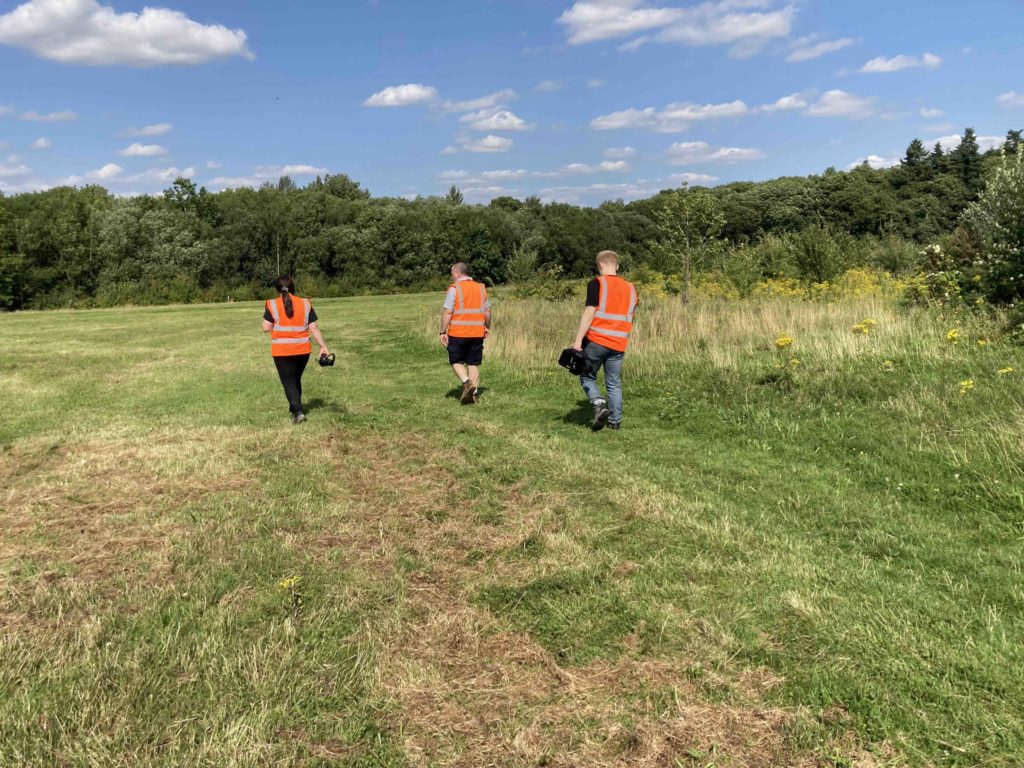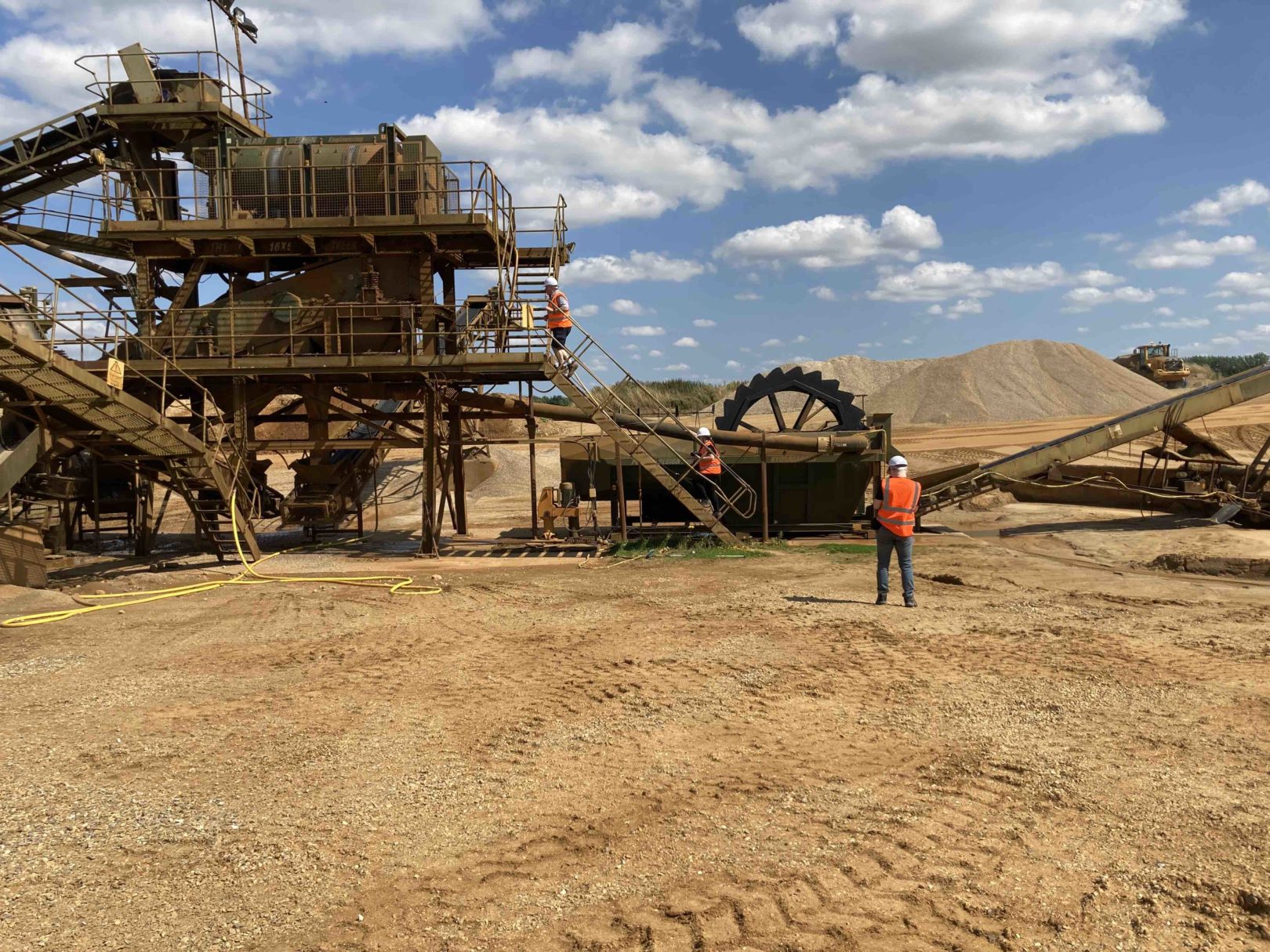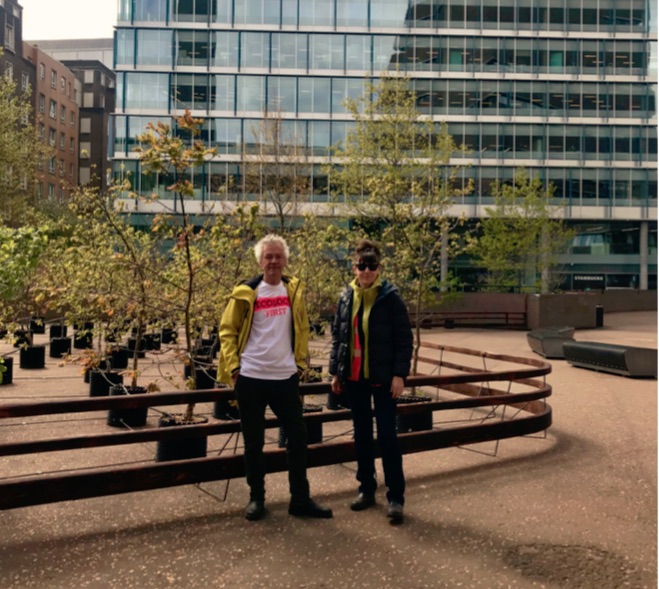Veronica Sekules
GroundWork’s project about extracting sand gravel and stones from Norfolk quarries has been guided initially by the priorities of the Norfolk Coast Partnership, who are responsible for this area of outstanding natural beauty. They want to support a local industry, but need to make sure it does not take too much from the land. Our programme is part of our wider connection with the US-based and initiated Extraction: Art on the Edge of the Abyss project. Kaitlin Ferguson is the first artist in residence for this at GroundWork. Here are a few notes about our first few days and what we are discovering.
We have been curious to find out exactly how this extractive industry works. How does it operate? How is it regulated? Three artists have been given a very loose brief to undertake research in situ. Can they be inspired by this subject? Can they contribute any new understanding? They are under no pressure to make work, this phase is all about gaining deeper understanding in preparation.
Flint and chalk, part 1
Kaitlin’s main piece of research is mainly about the extraction of flint and chalk in Norfolk. However as we go along, she is open to other discoveries. And there have been plenty.
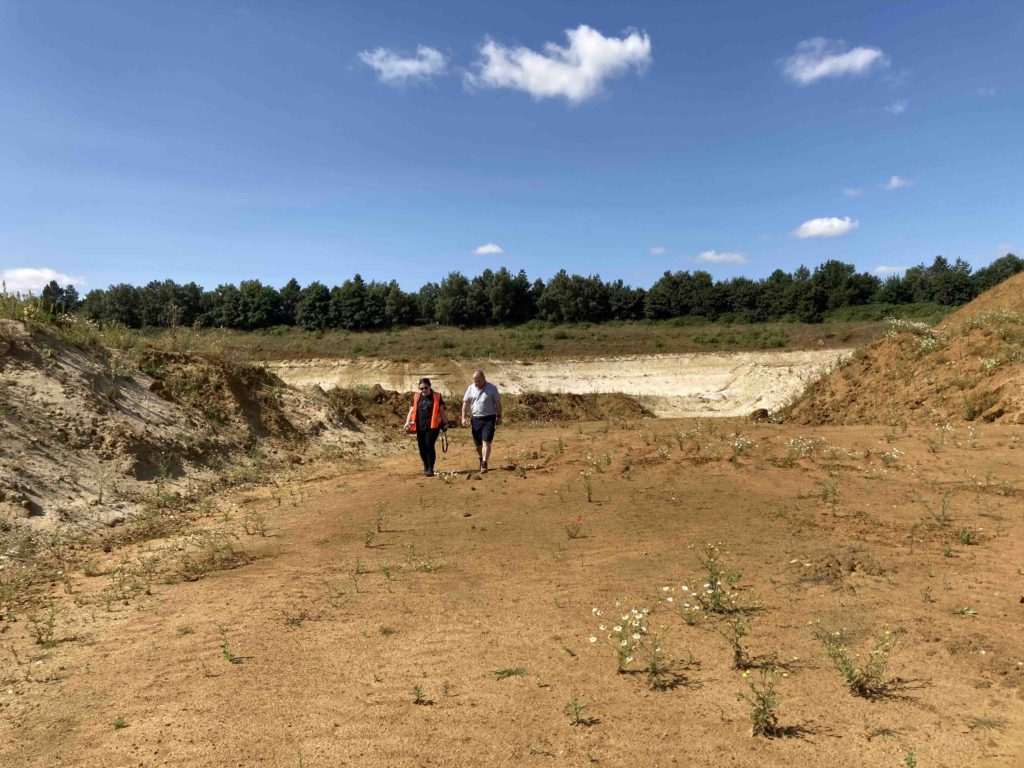
I went with her along to Middleton Aggregates, where Peter Lemon, CEO, greeted us. We didn’t know exactly what we would find. We half expected to find a landscape of vast chasms and open pits. But no, far from it. We found a series of neat landscapes of order.
Different sites produced different varieties of minerals, graded according to varying sizes. Some were sub-divided, both according the varieties of minerals, and to the different functions necessary in dealing with them.
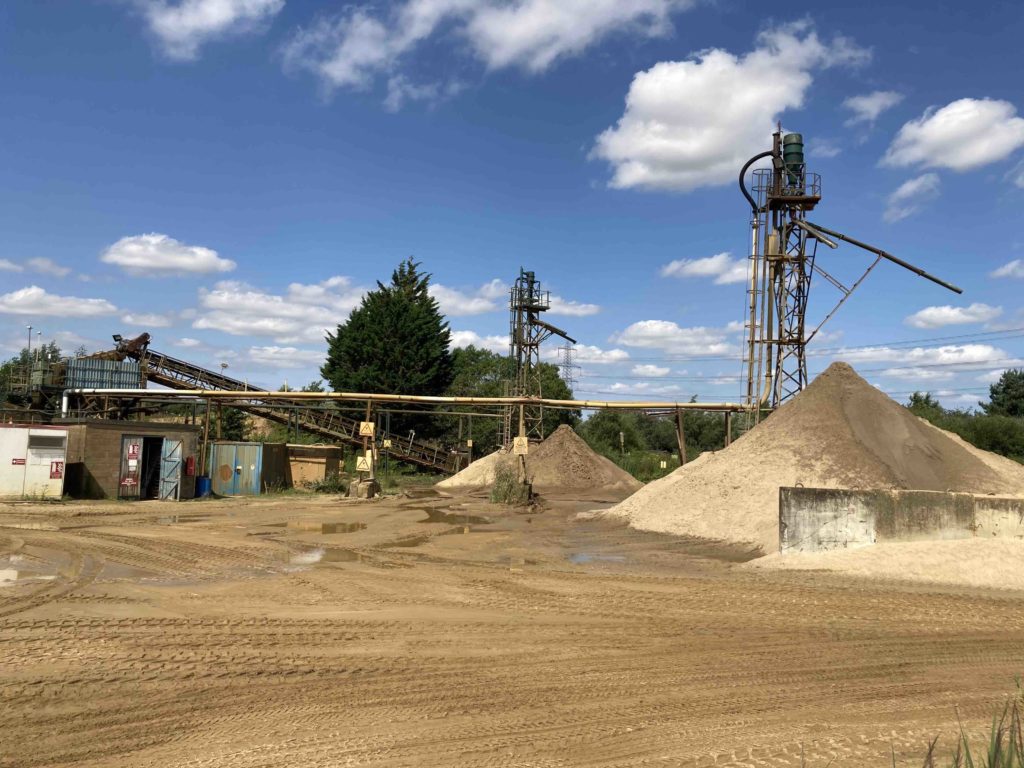
Other sites were in various states of restoration. We saw all their 4 sites and came away at the end convinced that this was an industry which is using its extracted materials in the most economic and environmentally sensitive way possible. This is partly for reasons of economy. Because minerals are not plentiful in Norfolk, the most has to be made of them. But also, we learned that the mineral extraction industry in Britain is heavily regulated.
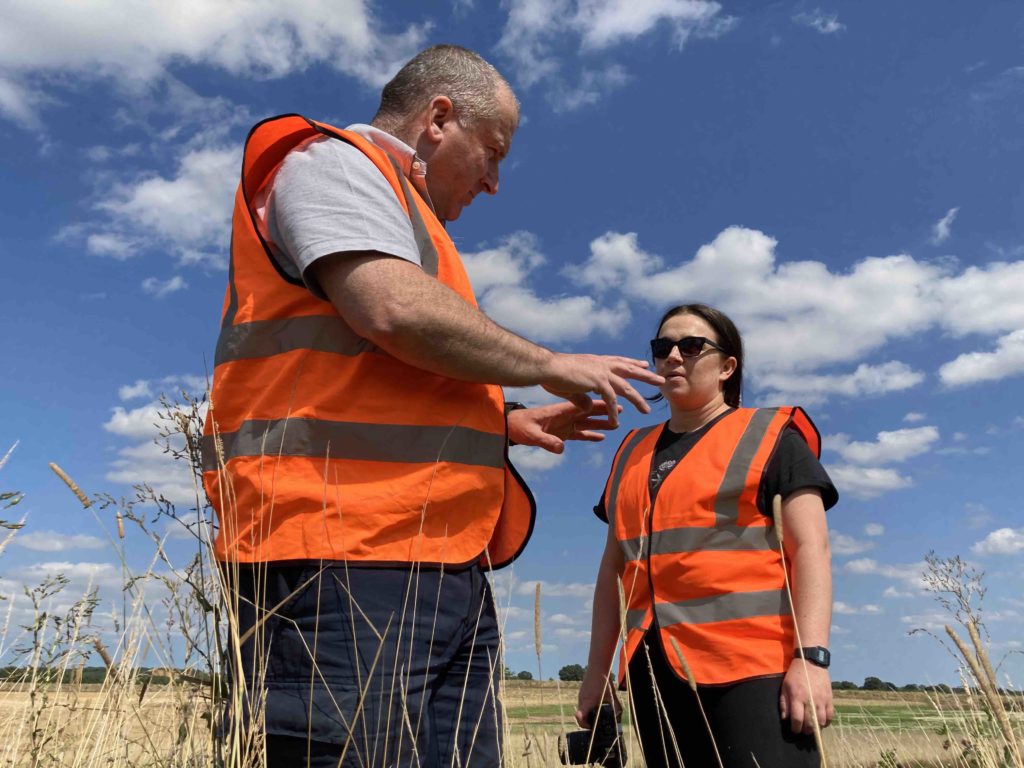
Extraction policy and mineral strategy
Several agencies are involved in regulating mineral extraction. County Councils all have Mineral Strategies covering a 15 year period. All producers have to abide by their rules about permissible levels of extraction and about land restoration after quarries are exhausted.
For Norfolk and most councils, this comes under the same policy category as waste management – as the minerals and waste core strategy. Indeed Middleton Aggregates does undertake a certain amount of waste management and recycling. However, in policy terms, to lump these issues together does raise questions about how seriously the governance of extraction is being taken as an environmental project. In terms of it involving the removal of natural material out of the earth, it is not a waste industry, but one which deals fundamentally in environmental resources and sustainability.
The Environment Agency
The Environment Agency issues licences and supposedly keeps a watch on certain aspects of production such as silt lagoons. As part of our extraction research, this is something we need and want to find out more about. Do they live up to their title? Do they really have the good of the environment at the heart of all they do? How effective are they as a regulatory body? What are their powers really?
Middleton Aggregates
Sitting at his glass-topped board room table, beneath which was an array of different stones and gravels, Peter Lemon explained to us about the characteristics of the all the stone types we could see. Norfolk its not a county rich in hard rock such as granite. Basically, there isn’t any. But there is plenty of sand and gravel, and Carrstone, which is a relatively soft rock. Nevertheless, it is a big business when we realise that 200 tons of aggregates are involved in every single domestic house building. Each one of us is sheltered and surrounded by, and stands on extracted material every day.
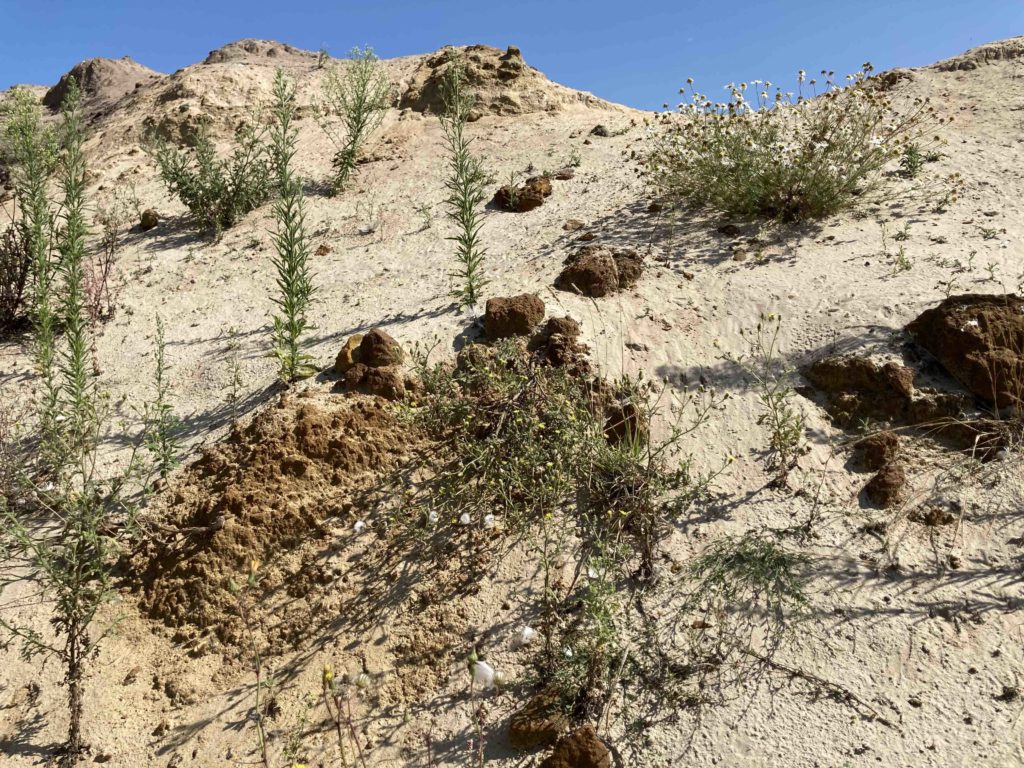
Sand, Gravel and Carrstone
Middleton Aggregates’s main site concentrates on Carrstone, a characteristic brick red colour and which is used for building only in relatively small quantities. Otherwise, crushed, it supplies materials for use as fill material, capping layers and hardcore.
At Pentney, they mine sand and gravel. As the material comes out of the earth, it is fed through huge machines which sort it into sizes and wash it. Some of the larger flints are sold on as building or garden material. However, most larger pieces are crushed to provide chippings for various building purposes. Among the stones they can sometimes find fossils – indeed we found a fossil on one of the stone piles – probably a 10,000 year old bison bone.
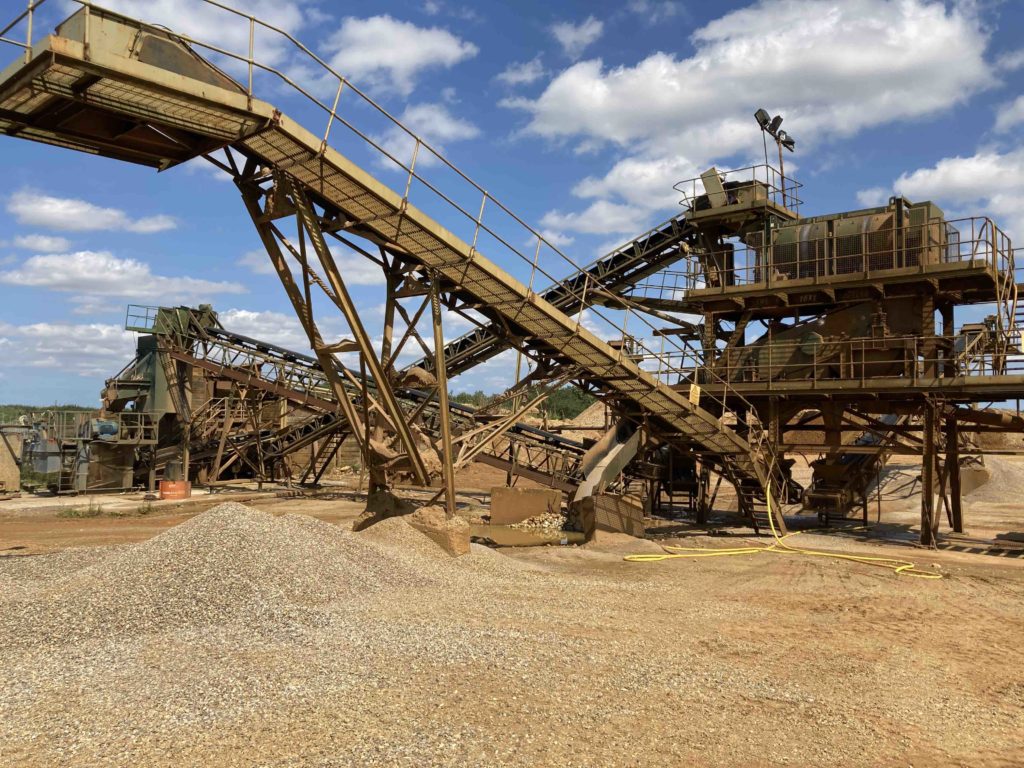
Quarry lakes and habitats for wildlife
The most impressive part of the site was created from former quarries. These have been restored to provide a beautiful landscape of lakes and woodland. We learned that former quarries make brilliant habitats for wildlife, and in fact comprise 75% of the SSSi’s in Britain.
There are pros and cons to this type of restoration however. Ponds and lakes are great for wildlife, but there is a potential danger to humans who might be tempted to dive into the water. Quarry ponds can be uneven in depth and full of hazards. Access Norfolk, an organisation for migrants has published severe warnings on their website about this, following a local tragedy at Bawsey.
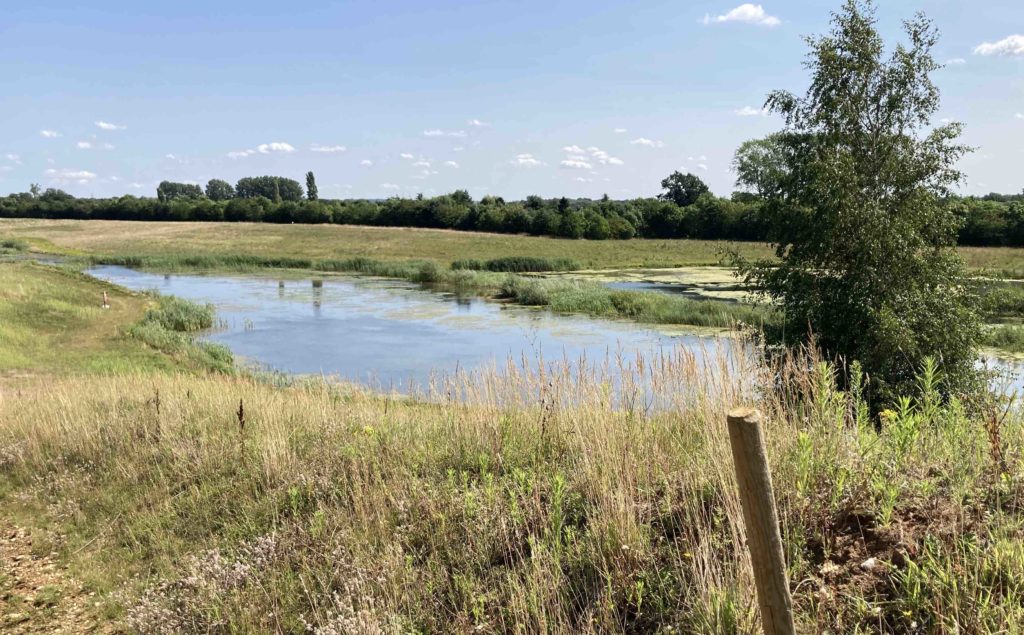
We were then taken to East Bilney to see a sand and gravel quarry which was almost finished, and being restored to agriculture. Farmers can make more money by leasing land, or getting royalties from quarry operations than they do from crops. However, any agreement has to include the restoration. No quarry operation can just leave land neglected at the end.
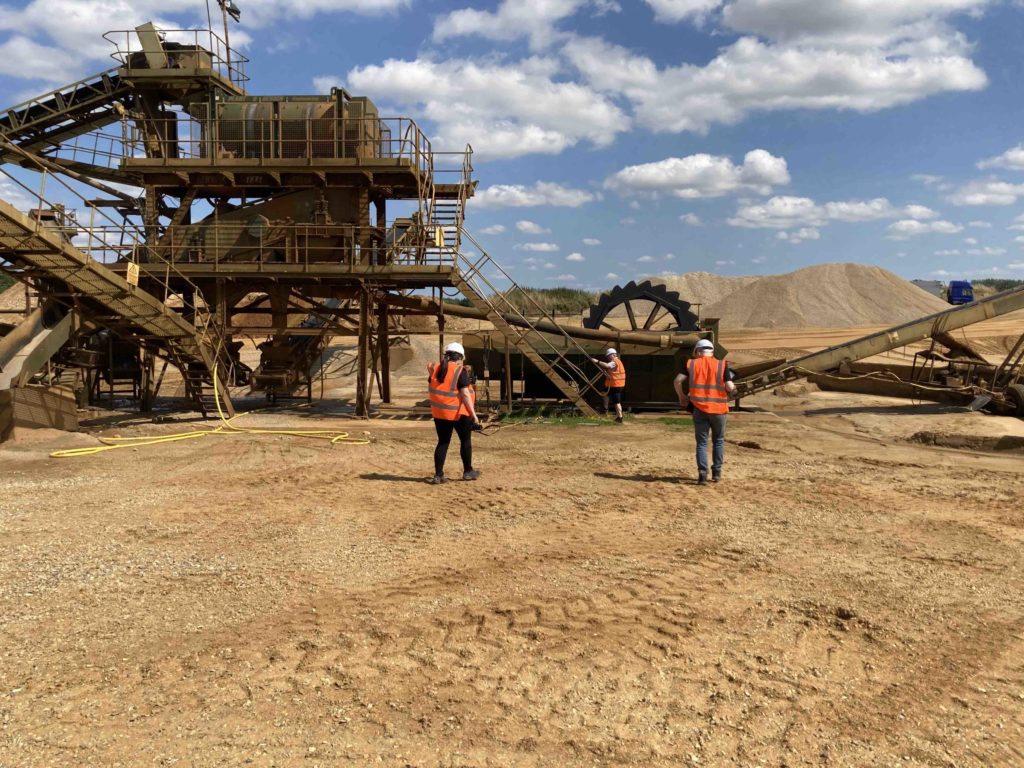
Extraction and Norfolk quarries: land restoration
Finally we visited Ketteringham. This is a small remaining recycling operation supplying materials for re-sale. There is also a ready-mix concrete plant. But it is a large restoration project and a good example of what can be achieved through imaginative collaboration with the local community. For, the former quarries there are now maintained by Middleton Aggregates as a country park with free access for all. There are education projects there and great attention to wildlife. From the rental the community gets for Middleton’s remaining quarry operation, they are investing in a fund which will pay in perpetuity for its ongoing maintenance as a community facility.
